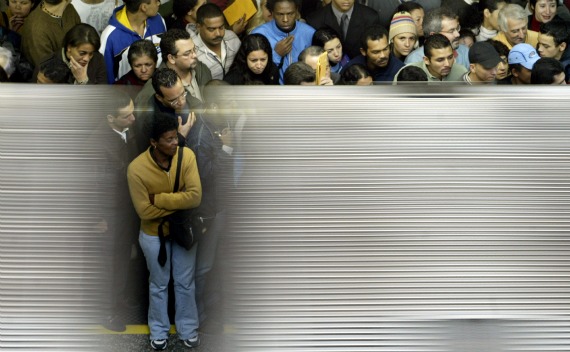Latin America’s Growing Middle Class
More on:

Two recent studies look at the rise of Latin America’s middle class. The first, by ECLAC (Economic Commission for Latin America and the Caribbean), shows that nearly across the board, the share of Latin America’s middle has expanded (the exceptions being Argentina, where it shrank and Colombia, where it held steady). The second study from Brookings places Latin America in a global comparison and looks toward the future. Here, they define the middle class on global terms, as those that earn enough to be above the poverty line in the two advanced European countries with the lowest poverty lines (Portugal and Italy) and earn less than double the median income of Luxemburg (the richest advanced country). Again the Latin American metrics are impressive. Using 2005 numbers, it finds the middle class now comprises over half of the population in four countries: Mexico (61 percent), Uruguay (56), Argentina (52), and Costa Rica (52). Data since then show that Brazil too has crossed this threshold. Impressive too are the results of their simulations for the future – even in their more conservative estimates, most Latin American countries will become solidly middle class over the next two decades (the current leaders overwhelmingly so).
Three interesting points come out of these studies. First, it reaffirms Latin America’s increasingly positive economic story. In addition to exports, Latin American countries can increasingly rely on domestic consumption to fuel economic growth and advance well-being.
Second, on these metrics Latin American nations far outpace China and India. While the absolute numbers of the middle class in these Asian giants are substantial, as a percentage of the overall population they remain miniscule – a paltry 3.8 percent in China and 2.5 percent in India. And they aren’t likely to catch up any time soon. Even in the best case scenarios this gap won’t close for two decades. This vast difference – and the structural ramifications for these economies - grants Latin America a potential competitive edge in today’s globalized world.
Finally, if the old truism holds, the rising middle class should be good for democracy. Preliminary evidence suggests that this is indeed the case. The expansion of the middle class and of democracy have coincided in most places in the region. But more telling than this correlation, policies favored by the middle – health care, security, education, and general economic openness - are increasingly on the political agenda, suggesting that the votes of this group matter. These dual trends hold out the hope that an expanding middle can provide both more resources to the state (through increased tax intakes) and demand greater accountability and transparency of their respective governments, deepening democracy in the process.
More on:
 Online Store
Online Store